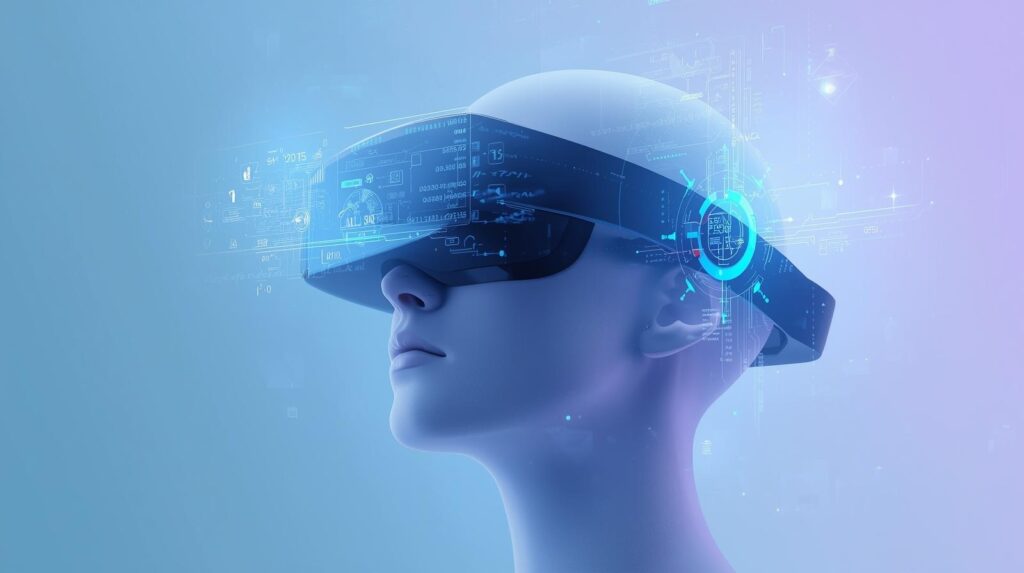Exploring the Future of AR Glasses
In a world where technology rapidly evolves, augmented reality (AR) glasses stand out as a transformative innovation with the potential to revolutionize how we interact with the digital and physical worlds. As a thought leader in technological innovations, I aim to explore the future of AR glasses, examining their applications, benefits, and challenges. This article will provide insights into what AR glasses are, their current state, and what the future holds for this exciting technology.
What Are AR Glasses?
AR glasses are wearable devices that overlay digital information onto the real world. Unlike virtual reality (VR) headsets, which immerse users in a fully digital environment, AR glasses enhance the real world by adding layers of digital content. This technology allows users to access information, interact with digital objects, and visualize data in real-time without disconnecting from their surroundings.
Key Features of AR Glasses
- Transparency: AR glasses use transparent displays, allowing users to see both the real world and digital overlays simultaneously.
- Interactivity: Users can interact with digital content using gestures, voice commands, or eye-tracking technologies.
- Portability: Designed for everyday use, AR glasses are lightweight and comfortable, making them suitable for various applications.
Current Applications of AR Glasses
AR glasses are already making waves across different industries. Here are some notable applications:
Healthcare
In healthcare, AR glasses assist surgeons by providing real-time data and 3D models during procedures. This technology enhances precision and reduces the risk of errors, ultimately improving patient outcomes.
Manufacturing
Manufacturers use AR glasses to streamline assembly processes and enhance quality control. Workers can access instructions and checklists directly in their field of view, minimizing downtime and increasing efficiency.
Retail
Retailers leverage AR glasses to create immersive shopping experiences. Customers can try on virtual clothing, visualize furniture in their homes, and receive personalized recommendations, enhancing the overall shopping experience.
Education
In education, AR glasses offer interactive learning experiences. Students can explore historical sites, conduct virtual experiments, and visualize complex concepts, making learning engaging and effective.
What Are the Best AR Glasses?
When considering AR glasses, it’s essential to evaluate the best options available in the market. Here are some leading AR glasses that are shaping the industry:
Microsoft HoloLens 2
The HoloLens 2 is a powerful AR headset designed for enterprise use. With advanced sensors, eye-tracking technology, and a comfortable design, it offers a seamless AR experience for professionals.
Google Glass Enterprise Edition 2
Google Glass has evolved into a valuable tool for businesses. The Enterprise Edition 2 features a lightweight design, improved performance, and integration with Google’s ecosystem, making it ideal for various industries.
Magic Leap 1
Magic Leap 1 offers a unique AR experience with its spatial computing capabilities. It targets creative professionals, developers, and businesses seeking to explore innovative AR applications.
Challenges and Limitations
While AR glasses hold immense promise, they also face several challenges that must be addressed to ensure widespread adoption.
Technical Limitations
- Battery Life: AR glasses require significant power to operate, limiting their battery life and usability for extended periods.
- Field of View: Current AR glasses have a limited field of view, which can restrict the immersive experience and usability.
Privacy Concerns
With the ability to record and display information in real-time, AR glasses raise privacy concerns. Ensuring user privacy and data security is paramount to gaining public trust.
Cost
High production costs result in expensive AR glasses, making them less accessible to the general public. As technology advances, reducing production costs will be crucial for mass adoption.
The Future of AR Glasses

The future of AR glasses is promising, with advancements in technology and increased investment driving growth. Here are some trends and developments to watch for:
Improved Hardware
As technology evolves, we can expect AR glasses to become more compact, with better battery life and wider fields of view. These improvements will enhance user experience and drive adoption across various sectors.
Integration with AI
The integration of artificial intelligence (AI) with AR glasses will unlock new possibilities. AI-powered AR glasses can provide context-aware information, predictive analytics, and personalized experiences, transforming how users interact with the world.
Expansion into Consumer Markets
While AR glasses are currently more prevalent in enterprise settings, the consumer market holds significant potential. As prices decrease and applications expand, AR glasses will likely become commonplace, similar to smartphones today.
Cross-Industry Collaboration
Collaboration between technology companies, developers, and industry leaders will drive innovation and create new use cases for AR glasses. This collaboration will be essential in overcoming challenges and realizing the full potential of this technology.
Conclusion
AR glasses represent a significant leap forward in how we interact with technology. Their ability to seamlessly blend digital content with the real world opens up a world of possibilities across various industries. However, for AR glasses to reach their full potential, challenges such as technical limitations, privacy concerns, and cost must be addressed.
As a Chief Technology Officer, Business Strategist, or Innovation Manager, understanding the implications of AR glasses on your industry is crucial. By staying informed and exploring strategic opportunities, you can position your organization to leverage this transformative technology for growth and innovation.
In the coming years, AR glasses will likely become an integral part of our daily lives, shaping the future of how we work, learn, and connect with the world around us. Embrace the journey into augmented reality and explore the endless possibilities that lie ahead.




